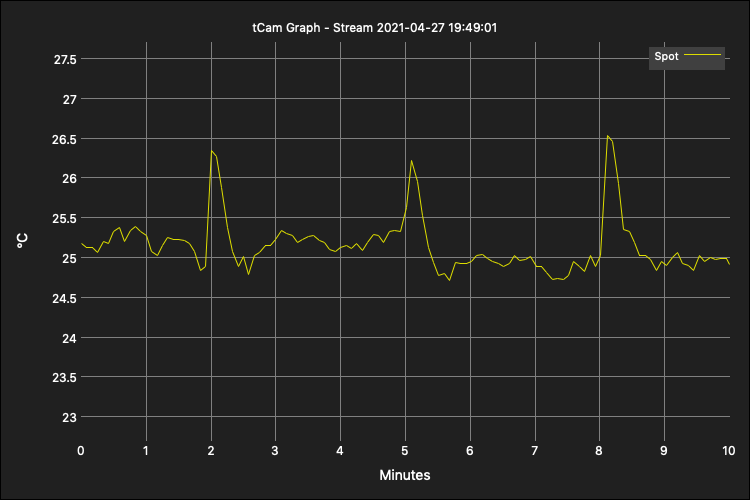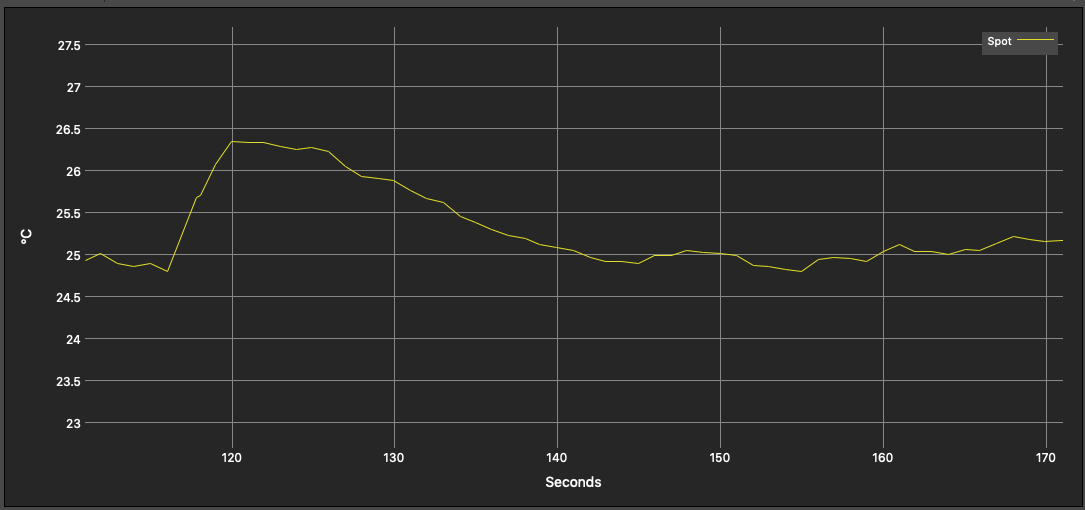The Lepton closes its shutter, performing an action called a Flat Field Correction (FFC), occasionally as part of its non-uniformity correction (NUC) to generate a uniform output compensating for temperature changes, pixel variation and lens effects. Closing the shutter exposes all pixels to a uniform temperature so the NUC algorithm can generate calibration offsets for each pixel. A FFC can be triggered manually but is usually performed automatically by the Lepton based on several inputs including ambient temperature changes since the last FFC and a 3 minute timer. Without a periodic FFC, drifts in the output values of each pixel cause increasing temperature error measurements and degradation of visual images over time.
All very good except that there is a noticeable change in the absolute radiometric temperature data after a FFC as shown below. The graph shows the output of the spotmeter measured once per second over a 10 minute interval while imaging the 26°C IVAC black body radiator. The FFC operation, occurring every 3 minutes, is clear.

The change is less than the specified accuracy of the Lepton but still significant if one wishes to improve on that accuracy. I found two interesting pieces of data in this experiment.
- It takes about a minute for the Lepton to settle down after a FFC so this time constant should be used when collecting data for calibration.
- Outside of the period after a FFC the Lepton appears to hold about a 0.5°C precision.
The second item has me considering a modification to the tCam firmware to show something like a green dot during the period of stability so users know when the radiometric readings are more stable and likely more accurate.
Following are expanded (time axis) portions of the above graph showing behavior during the FFC and during steady-state.


 Dan Julio
Dan Julio
Discussions
Become a Hackaday.io Member
Create an account to leave a comment. Already have an account? Log In.